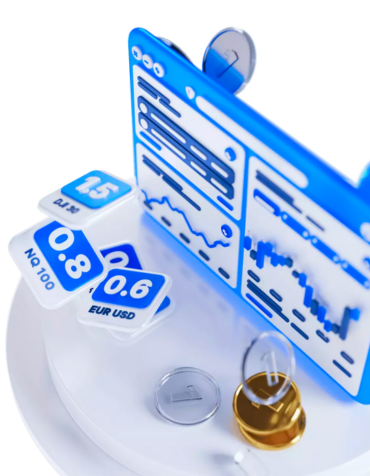We round up the best brokers that we believe offer best value for forex traders.





Trading the SGDUSD forex pair involves buying or selling it in the foreign exchange (forex) market. Here are the basic steps to trade SGDUSD:
To trade any forex pair, including SGDUSD, you'll need to open an account with a reputable forex broker. Ensure that the broker offers access to this specific SGDUSD pair.
Deposit funds into your forex trading account. The amount you deposit will determine the size of your trading positions.
Before making any trades, perform a thorough analysis of the SGDUSD pair. This analysis typically involves fundamental analysis (economic data, interest rates, geopolitical events) and technical analysis (price charts, indicators) to determine your trading strategy.
Most brokers offer trading platforms that allow you to execute trades. Familiarize yourself with the platform's interface and tools.
Choose whether you want to buy (long) or sell (short) the SGDUSD pair based on your analysis. Enter the trade order on your trading platform, specifying the amount (lot size) you wish to trade.
Executes the trade immediately at the current market price.
Sets a specific price at which you want your trade to be executed.
Sets a price at which your trade will be triggered if the market moves in a certain direction.
To manage risk, consider setting stop-loss orders to limit potential losses and take-profit orders to lock in profits at a certain price level.
Once your trade is executed, monitor the SGDUSD pair's price movement. Keep an eye on news and events that may impact the exchange rate.
When you achieve your trading objectives, either manually close the trade or wait for your predetermined take-profit or stop-loss levels to be reached.
After closing your trade, assess the outcome. Review your trading strategy and learn from both successful and unsuccessful trades to improve your skills.
Always practice proper risk management. Never risk more than you can afford to lose, and consider using leverage cautiously if available.
For the breakout strategy, you'll want to start by identifying the support and resistance levels on the SGDUSD chart. Once you've done that, keep an eye out for a breakout above the resistance level or below the support level. If there's a breakout above resistance, consider placing a buy trade with hopes of further upward movement. On the other hand, if there's a breakout below support, think about placing a sell trade with hopes of further downward movement. And don't forget to implement proper risk management techniques like setting stop-loss orders.
Now let's talk about the moving average crossover strategy. This one involves using two moving averages (like a 50-day and 200-day) on the SGDUSD chart. Wait for the shorter moving average (the 50-day in this case) to cross above the longer moving average (the 200-day). When this crossover happens, it might be a good idea to take long positions in anticipation of an upward trend continuation. Conversely, if that shorter moving average crosses below the longer one, you might want to consider taking short positions in anticipation of a downward trend continuation.
Lastly, we have the Fibonacci retracement strategy. To get started with this one, look for significant price swings on that SGDUSD chart using Fibonacci retracement levels (after an uptrend or downtrend). Draw those Fibonacci retracement lines from swing lows to swing highs during an uptrend or from swing highs to swing lows during a downtrend. Keep an eye out for potential entry points near key Fibonacci retracement levels like 38.2%, 50%, or 61.8%. These are spots where price may reverse its direction and continue with its previous trend. If you want even more accuracy, try combining this strategy with other technical analysis tools like candlestick patterns or indicators.